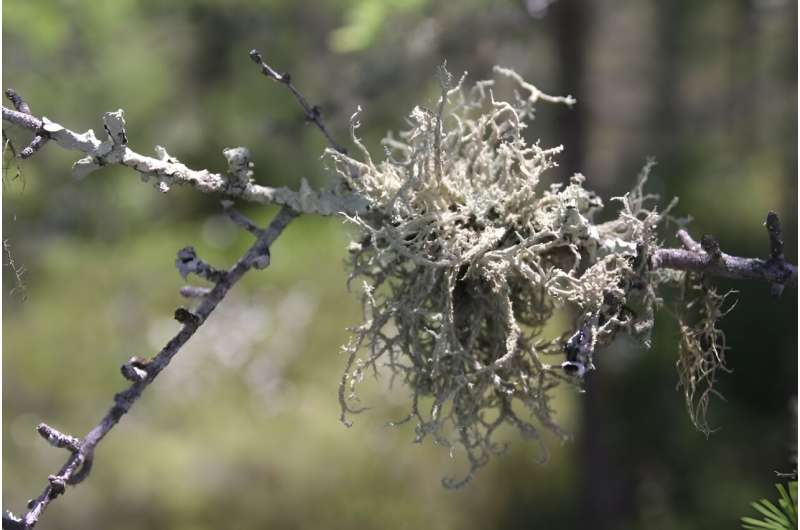
Lichen, which people may think of as a single organism, is in fact a community of several species that depend on each other for survival. Lichen symbiosis includes at least one fungus and one alga, along with other fungi and bacteria in roles that are still being investigated by biologists.
The continued health of lichens is vital to the future of our Northern forests because they provide a critical winter food source for many animals. They are also valuable “sentinels” of air quality and environmental health. For these reasons, scientists are eager to understand how they may be affected by climate change.
New research published in Science Advances from the University of Minnesota investigated symbiosis in boreal oak lichen, a variety widespread on several tree species across Minnesota and the Northwoods.
Using multiple research methods, the team found:
- The partner organisms that make up lichen symbioses are not always in sync—one organism may have an extreme response to changes in moisture while its partner remains unaffected.
- These differences may drive one partner to “go it alone” under some conditions, disrupting the symbiosis—other research has observed this in corals.
- The team used gas exchange data to show asymmetries in carbon balance are widespread across evolutionarily disparate lichen groups.
“At summer temperatures, wetting with anything more than water vapor leads to unsustainable carbon losses for boreal oak lichen, which may explain why it prefers humid environments like bogs,” said Daniel Stanton, assistant professor in the College of Biological Sciences. “We already knew this species is vulnerable to heating and drying, now we can start to understand exactly how and why—all key insights into the threats from future climate change.”
In simple cases of symbiosis, such as a clownfish and a sea anemone, the needs of the partner organisms may be well-balanced and complimentary. The research shows that symbiosis in lichens is more complex, and each organism may react differently when faced with changing weather conditions or environmental stress.
“Unexpectedly, the alga just does its own thing: once active, it doesn’t seem to respond at all to the major changes that the fungus undergoes when we add liquid water,” said Stanton. “It shouldn’t be a surprise that the different organisms that make up lichen symbioses respond to different cues, but it has often been far too easy to lose sight of that when working with such seemingly closely integrated symbioses.”
Future research will focus on unpacking when the components of lichen symbiosis are and aren’t coordinated. The team hopes to better understand what each organism does under different circumstances.
More information:
Abigail R. Meyer et al, Symbionts out of sync: Decoupled physiological responses are widespread and ecologically important in lichen associations, Science Advances (2024). DOI: 10.1126/sciadv.ado2783
Provided by
University of Minnesota
Citation:
Lichen partnerships challenged by changes in the Northwoods (2024, June 26)
retrieved 26 June 2024
from https://phys.org/news/2024-06-lichen-partnerships-northwoods.html
This document is subject to copyright. Apart from any fair dealing for the purpose of private study or research, no
part may be reproduced without the written permission. The content is provided for information purposes only.




